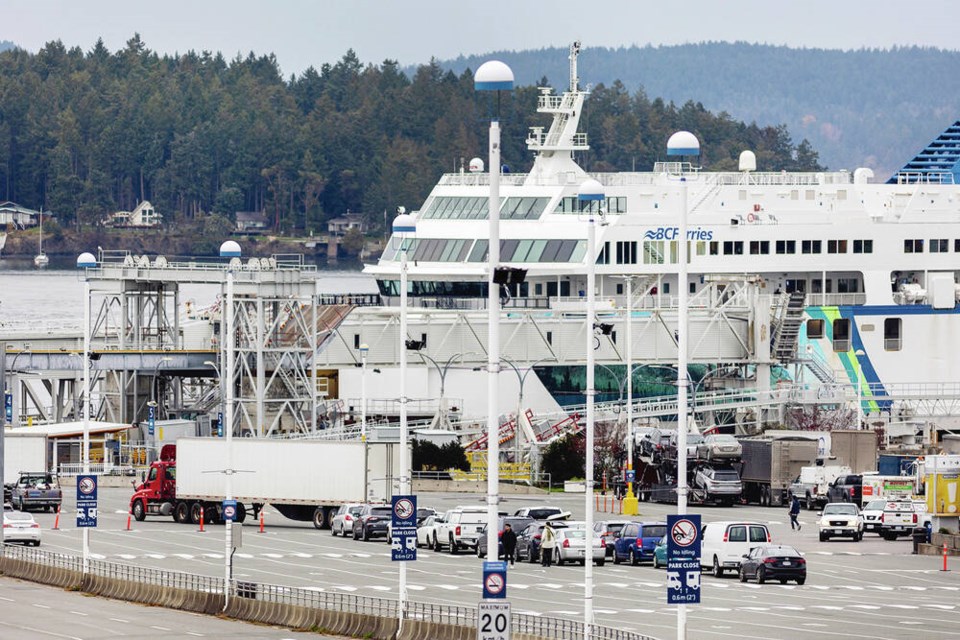B.C. Ferries ended the second quarter of this fiscal year with higher net earnings and revenues, and more passengers compared with the same months a year ago, but was also saddled with climbing operational expenses.
“While traffic revenues are strong, like many other transportation companies, B.C. Ferries continues to experience significant cost pressures,” Nicolas Jimenez, B.C. Ferries’ president, said Friday.
“The outlook for year-end remains subject to these cost pressures, variability of economic conditions and travel demand, which slows in the fall and winter months.”
These inflationary pressures were experienced in all cost categories, the company said.
Earnings for the three months ending Sept. 30 were $102.1 million, up by $21.7 million from the same months last year, the company said in its second-quarter report.
For the first half of the year, net earnings were $117.3 million, compared with net earnings of $88.3 million the previous year.
B.C. Ferries carried 7.8 million passengers and three million vehicles in this year’s second quarter. Last year saw 7.5 million passengers and the same number of vehicles.
A total of 13.6 million passengers and 5.5 million vehicles were carried in the first half of this fiscal year. That’s up five per cent and two per cent from those months last year, the company said.
Revenue for the second quarter came in at $381.5 million. It climbed by $38.4 million or 11 per cent compared with the previous year, largely because of higher vehicle and passenger traffic, tariff rates, fuel surcharges and retail revenue.
So far this fiscal year, revenue was tallied at $668.4 million, rising by 10 per cent and was up by $60.4 million over the same months last year.
However, operational expenses also climbed by 11 per cent in the second quarter this year. They moved up by $20.7 million to $269.6 million compared with the same months last year.
The year-to-date pictures showed that those costs increased by $39.2 million or eight per cent to $530.2 million, the company said.
B.C. Ferries said that because ferry travel is seasonal, it normally sees higher net earnings in the half of its fiscal year when a large number of people are travelling. Earnings typically drop in its final six months of a fiscal year.
B.C. Ferries’ annual refit season is underway, and the company will be making substantial investments in vessels and terminals, Jimenez said.
”We’ll also continue to focus on catching up on multiple years of deferred investments in our people and our infrastructure.”
This includes an early wage re-opener to provide employees with increases in advance of the timing in the collective agreement, he said.
The company is in the midst of an arbitration process with the B.C. Ferry and Marine Workers’ Union as the final wage offer from the company was rejected by the union, Deborah Marshall, B.C. Ferries spokesperson, said Friday. The earliest the arbitration panel is able to meet is February 2024.
The union had no comment.
During the second quarter of this year, B.C. Ferries saw many sailings cancelled because of motor problems with Coastal class vessels, all now either in repair or scheduled for future repairs. Those costs are being covered under an insurance claim.
Sailing cancellations due to continuing crew shortages declined to 0.4 per cent in the second quarter from 0.6 per cent. But total cancellations came in at one per cent, reflecting mechanical problems in the recent quarter, the company said.



